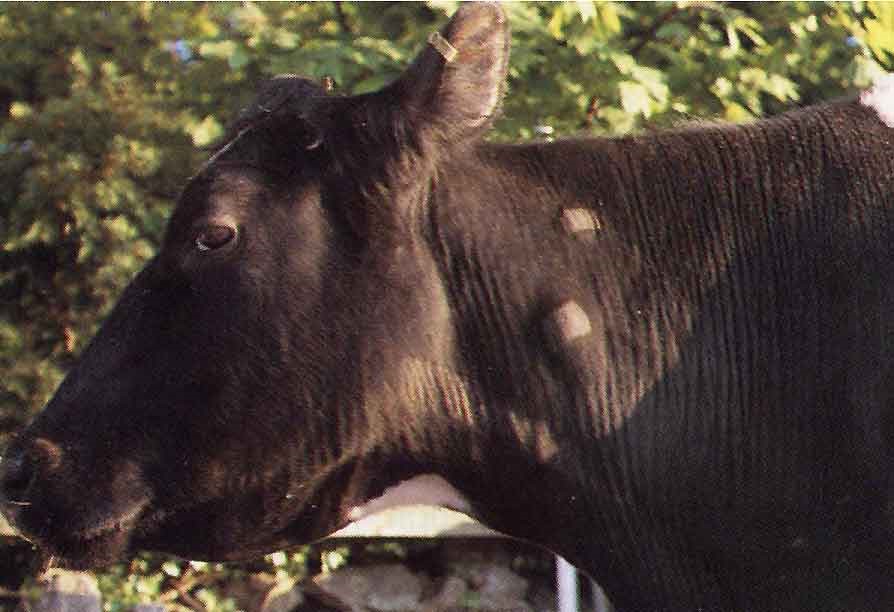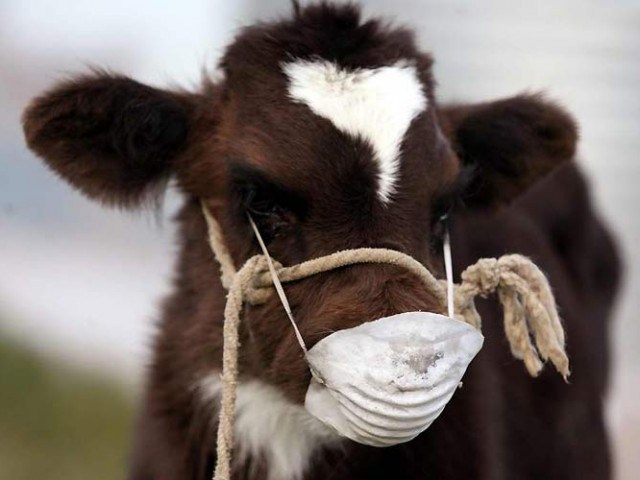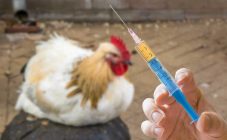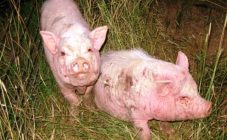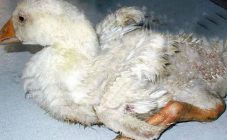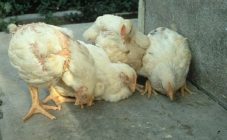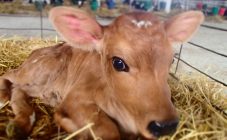Content:
Tuberculosis is a bacterial disease that can affect cattle, poultry and even humans. The characteristic features of the pathology are high infectivity and mortality in many cases. It is accompanied by the formation of specific nodules on the internal organs, skin and mucous membranes, prone to necrosis. There is no effective therapy for tuberculosis in cows, therefore, due to the high infectivity, all animals with a positive reaction to the infection must be destroyed.
Bovine tuberculosis: general description
The tubercle bacillus contributes to the development of human, bovine and avian pathology. The pathogen is extremely cold-resistant, capable of withstanding frosts down to -269 degrees. In dairy products, the infection can remain active for one year.
The pathogenic microorganism dies when exposed to heat and treated with disinfectant solutions.
The transmission of bacteria is carried out by airborne droplets, as well as with fecal matter and urine. In almost 100% of cases, intrauterine infection of the fetus from the mother occurs. Animals are often infected with tuberculosis through feed, in barns, pastures and at watering places.
Cattle living in a herd are more often susceptible to the disease, since in this case there are several factors contributing to the development of tuberculosis:
- Chemical treatment, gas contamination of premises.
- Overcrowding, tightness.
- Loud noise, which often makes animals stressed.
- Dampness in pens, poor ventilation.
- Poor quality food.
Symptoms of tuberculosis in cows
The disease poses the highest danger to young animals. In young calves, the acute form of the pathology is most often diagnosed. It is possible to diagnose the disease by taking an intradermal sample. In adults, the disease proceeds somewhat differently, there is a chronic course of tuberculosis, and there are no symptoms for a long time.
As a rule, from the moment of infection until the first signs appear, approximately two to three weeks pass. Sometimes the incubation period can be several months.
In animals with a strong immune system, the bacterium can be suppressed for years, but the livestock is a source of infection and infects other individuals and humans.
Two main forms of the disease are distinguished in cattle - pulmonary, pearl and paratuberculosis of cattle.
The first is accompanied by the development of the following clinical picture:
- The focus of the disease is located in the chest. This is why a cow coughs when she has tuberculosis. At the same time, a short and dry cough is heard.
- The pathological condition is accompanied by shortness of breath in the morning; after a long lying down, the cows cough loudly and for a long time.
- As the disease progresses, shortness of breath appears and sputum is coughing up.
- An unpleasant foreign smell is emitted from the animal's nose and oral cavity, a secret may flow.
- If you put your ear to the ribs, you will hear various extraneous noises, for example, creaks, crackles, etc.
- Livestock is rapidly losing weight.
- The skin thickens, tuberculosis of the udder in cows is accompanied by the formation of seals. These are enlarged glands, the same ones are found on the neck.The main symptom of cattle infection is the formation of these nodules, their diameter reaches 10 cm.
Quite often, a purulent inflammatory process occurs in the lungs during the course of the disease. After slaughter, cavities of impressive size are often found, filled with dead tissue and pus.
The pearly form of the disease affects the pleura and peritoneum, and numerous small neoplasms are formed. Bumps and nodules that form become shiny, hard growths over time. The disease can affect livestock of any age; changes may not be noticeable to the breeder. The disease can only be detected after slaughter.
Bovine paratuberculosis is a chronic disease that occurs in ruminants. It affects the intestines, with the development of the form of the disease, transverse-longitudinal folding is formed, diarrhea and rapid depletion of the animal are observed. In Russia, the disease is diagnosed sporadically and mainly in the Non-Black Earth Zone.
Treatment and prevention methods
To reduce the likelihood of developing the disease, animals must use multivitamin complexes and minerals, food should only be of high quality. In this case, TB can still affect the herd, but according to some studies, the disease will take longer to develop and spread. Moreover, with good care, there are cases when the virus dies on its own and the cow recovers.
However, a rapid process of damage to the lungs and other vital organs is often observed, cattle quickly lose weight and die. In any such circumstance, cattle affected by tuberculosis are slaughtered.
The only way to prevent the development of the disease is allergic. Thanks to this method, it is possible to identify different forms of the disease in the herd, even in the absence of obvious signs. In this case, tuberculinization of cattle is indicated, instructions for use are attached. To detect tuberculosis in cattle, according to the instructions, tuberculin testing is carried out twice:
- On the eve of the start of the grazing season in spring.
- Shortly before leaving for winter maintenance.
It is recommended to do this procedure from the age of two months. The drug is administered intradermally, the skin is first cleaned of wool and treated with alcohol. The body's reaction will be noticeable after three days.
It should be noted that elderly cattle may not react at all to the drug. In this case, it is recommended to slaughter several animals, according to the state of the internal organs, it will be possible to identify the pathology.
In order to diagnose the infection in a timely manner, it is recommended to observe the following recommendations:
- The veterinarian should check the cows regularly.
- All rules of keeping and feeding animals must be strictly observed.
- It is advisable to harvest fodder in areas favorable for this.
- Grazing and slaughtering must be carried out with the approval of veterinary institutions.
Tuberculosis in cattle is, unfortunately, a common problem that requires immediate attention from the farmer. It will be possible to defeat and prevent the disease only if the rules for keeping animals are observed. They should be provided with a quality and balanced diet and kept in dry and well-ventilated areas.

